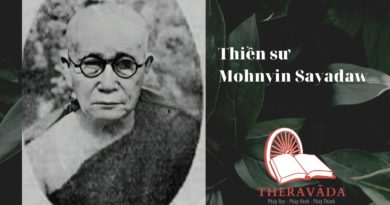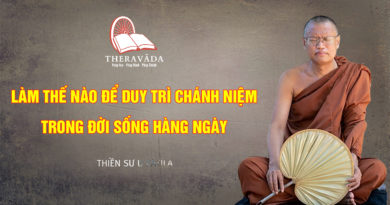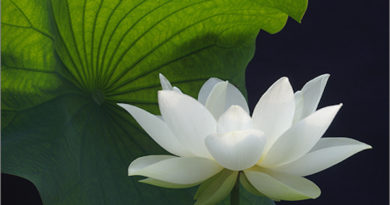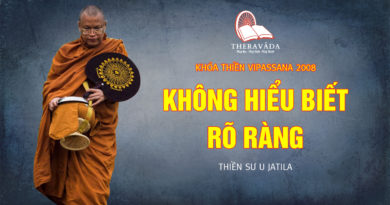What Is Vipassana?
MAIN CONTENT
Introduction
The technique of Vipassana is a simple, practical way to achieve real peace of mind and to lead a happy, useful life. Vipassana means “to see things as they really are”. It is a logical process of mental purification through self-observation.
From time to time, we all experience agitation, frustration and disharmony. When we suffer, we do not keep our misery limited to ourselves; instead, we keep distributing it to others as well. Enlightened people have therefore advised ‘Know thyself’, which means not merely knowing yourself at the intellectual level, or accepting at the emotional or devotional level, but to experience the truth about yourself, within yourself, at the experiential level. To achieve this, a technique of Vipassana meditation was taught in India more than 2500 years ago as a universal remedy for universal problems.
Vipassana enables us to experience peace and harmony by purifying the mind, freeing it from suffering and the deep-seated causes of suffering. Step by step, the practice leads to the highest spiritual goal of full liberation from all mental defilements.
The entire path (Dhamma) is an Art of Living and has nothing to do with any organized religion or sectarianism. For this reason, it can be freely practiced by everyone, at any time, in any place, without conflict due to race, community or religion, and will prove equally beneficial to one and all.
Historical Background
Vipassana is one of India’s most ancient meditation techniques. It was rediscovered 2500 years ago by Gotama the Buddha, and is the essence of what he practiced and taught during his forty-five year ministry. During the Buddha’s time, large number of people in northern India were freed from the bonds of suffering by practicing Vipassana, allowing them to attain high levels of achievement in all spheres of life. Over time, the technique spread to the neighbouring countries of Myanmar (Burma), Sri Lanka, Thailand and others, where it had the same ennobling effect.
Five centuries after the Buddha, the noble heritage of Vipassana had disappeared from India. The purity of the teaching was lost elsewhere as well. In the country of Myanmar, however, it was preserved by a chain of devoted teachers. From generation to generation, over two thousand years, this dedicated lineage transmitted the technique in its pristine purity. Venerable Ledi Sayadaw reintroduced the technique of Vipassana meditation to the lay people, which was accessible only to the monks before. He taught Saya Thetgyi, a layman, who in turn taught Sayagyi U Ba Khin.
In our time, Vipassana has been reintroduced to India, as well as to citizens from more than eighty other countries, by Mr. S. N. Goenka. He was authorized to teach Vipassana by the renowned Burmese Vipassana teacher, Sayagyi U Ba Khin. Before he died in 1971, Sayagyi was able to see one of his most cherished dreams realized. He had the strong wish that Vipassana should return to India, the land of its origin, to help it come out of its manifold problems. He felt that it would spread throughout the world from India, for the benefit of all mankind.
In the past, India had the distinction of being regarded as a World Teacher. In our time, the Ganges of Truth is once again flowing out from India to a thirsty world.
The Tradition
Since the time of the Buddha, Vipassana has been handed down, to the present day, by an unbroken chain of teachers. Although Indian by descent, the current teacher in this chain, Mr. S. N. Goenka, was born and raised in Burma (Myanmar). While living there, he had the good fortune to learn Vipassana from his teacher, Sayagyi U Ba Khin who was at the time a high-level Government official. After receiving training from his teacher for fourteen years, Mr. Goenka settled in India and began teaching Vipassana in 1969. Since then he has taught tens of thousands of people of all races and all religions all around the globe. In 1982, he began to appoint assistant teachers to help him meet the growing demand for Vipassana courses.
The Practice
The practice of Vipassana meditation involves following the principles of Dhamma/ Dharma, the universal law of nature. It involves walking on the noble eight fold path, which is broadly categorised into Sila (Morality), Samadhi (concentration) and Pañña (wisdom, insight).
To learn Vipassana, it is necessary to take a ten-day residential course under the guidance of a qualified teacher. The courses are conducted at established Vipassana Centers and other non-center locations. During the entire duration of the retreat, students remain within the course site having no contact with the outer world. They refrain from reading and writing, and suspend all religious practices or other disciplines. During the course, participants follow a prescribed Code of Discipline. They also observe noble silence by not communicating with fellow students; however, they are free to discuss meditation questions with the teacher and material problems with the management.
There are three steps to the training.
First, students practice sila (Morality) – abstaining from actions which cause harm. They undertake five moral precepts, practising abstention from killing, stealing, sexual misconduct, lying and the use of intoxicants. The observation of these precepts allows the mind to calm down sufficiently to proceed further with the task at hand.
Second, for the first three and a half days, students practise Anapana meditation, focusing attention on the breath. This practice helps to develop samadhi (concentration) and gain control over the unruly mind. These first two steps of living a wholesome life and developing control of the mind are necessary and very beneficial, but they are incomplete unless the third step is taken: purifying the mind of underlying mental impurities.
The third step undertaken for the last six and a half days, is the practice of Vipassana: one penetrates one’s entire physical and mental structure with the clarity of panna (wisdom, insight).
Students receive systematic meditation instructions several times a day, and each day’s progress is explained during a taped evening discourse by Mr. S. N. Goenka. Complete silence is observed for the first nine days. On the tenth day, students resume speaking, making the transition back to a more extroverted way of life. The course concludes on the morning of the eleventh day. The retreat closes with the practice of metta-bhavana (loving-kindness or good will towards all), a meditation technique in which the purity developed during the course is shared with all beings.
The Courses
Students wishing to learn Vipassana meditation undergo a minimum ten-day course under the guidance of a qualified teacher, during which time they take precepts not to kill, not to steal, not to commit sexual misconduct, not to speak lies, and to refrain from intoxicants. For the entire ten days, they live within the course site. Each day begins at 4:30 a.m. and continues until 9:00 p.m., with the student aiming for at least ten hours of meditation (with breaks).
For three days the student develops concentration of the mind by observing the inhalation and exhalation of the breath (Anapana). During the ensuing days, the student develops awareness and equanimity towards the various sensations experienced within the framework of the body and is shown how to penetrate his entire physical and mental makeup with the clarity of insight (Vipassana).
Each day’s progress is explained during an hour-long discourse in the evening. The course closes on the last day with the practice of loving kindness meditation (mettā bhāvanā), the sharing of the purity developed during the course with all beings.
The work of controlling and purifying the mind is given top priority during the course. The results are allowed to speak for themselves. Philosophical and speculative conversation is discouraged.
There is no charge whatsoever for the teachings. As for costs of board, lodging, and other minor expenses, these are met by the voluntary donations of grateful students of past courses who have experienced the benefits of Vipassana, and who wish to give others an opportunity to experience the same. In turn, having completed a course, if one feels benefited by it and would like others also to benefit from the practice of Vipassana, he or she may give a donation for future courses.
The rate of progress of a student depends solely on his own pāramīs (previously acquired merits), and on the operation of five elements of effort—faith, health, sincerity, energy, and wisdom.
A Non-Sectarian Technique
Vipassana meditation is for the purification of the mind. It is the highest form of awareness—the total perception of the mind-matter phenomena in its true nature. It is the choiceless observation of things as they are. Vipassana is the meditation the Buddha practiced after trying all other forms of bodily mortification and mind control, and finding them inadequate to free him from the seemingly endless round of birth and death, pain and sorrow. It is a technique so valuable that in Burma it was preserved in its pristine purity for more than 2,200 years.
Vipassana meditation has nothing to do with the development of supernormal, mystical, or special powers, even though they may be awakened. Nothing magical happens. The process of purification that occurs is simply an elimination of negativities, complexes, knots, and habits that have clouded pure consciousness and blocked the flow of mankind’s highest qualities—pure love (mettā), compassion (karuṇā), sympathetic joy (muditā), and equanimity (upekkhā).
There is no mysticism in Vipassana. It is a science of the mind that goes beyond psychology by not only understanding, but also purifying, the mental process. The practice is an art of living which manifests its profound practical value in our lives—lessening and then eliminating the greed, anger, and ignorance that corrupt all relationships, from the family level to international politics. Vipassana spells an end to daydreaming, illusion, fantasy—the mirage of the apparent truth. Like the sizzling explosion of cold water being thrown on a red-hot stove, the reactions after bringing the mind out of its hedonistic tendencies into the here and now are often dramatic and painful. Yet there is an equally profound feeling of release from tensions and complexes that have for so long, held sway in the depths of the unconscious mind. Through Vipassana anyone, irrespective of race, caste, or creed, can finally eliminate those tendencies that have woven so much anger, passion, and fear into our lives. During the training a student concentrates on only one task—the battle with his own ignorance. There is no guru worship or competition among students. The teacher is simply a well-wisher pointing the way he has charted through his own long practical experience. With continuity of practice, the meditation will quiet the mind, increase concentration, arouse acute mindfulness, and open the mind to the supramundane consciousness the “peace of nibbāna (freedom from all suffering) within.”
As in the Buddha’s enlightenment, a student simply goes deep inside himself, disintegrating the apparent reality until in the depths he can penetrate even beyond subatomic particles into the absolute. There is no dependence on books, theories, or intellectual games in Vipassana.
The truth of impermanence (anicca), suffering (dukkha), and egolessness (anattā) are grasped directly with all the enormous power of the mind rather than the crutch of the intellect. The illusion of a “self,” binding the mental and physical functions together, is gradually broken. The madness of cravings and aversions, the futile grasping of “I, me, mine,” the endless chatter and conditioned thinking, the reaction of blind impulse—these gradually lose their strength. By his own efforts, the student develops wisdom and purifies his mind.
The foundation of Vipassana meditation is sila—moral conduct. The practice is strengthened through samadhi—concentration of the mind. And the purification of the mental processes is achieved through panna—the wisdom of insight. We learn how to observe the interplay of the four physical elements within ourselves with perfect equanimity, and find how valuable this ability is in our daily lives. We smile in good times, and are equally unperturbed when difficulties arise all around us, in the certain knowledge that we, like our troubles, are nothing but a flux, waves of becoming arising with incredible speed, only to pass away with equal rapidity.
Although Vipassana meditation was developed by the Buddha, its practice is not limited to Buddhists. There is no question of conversion—the technique works on the simple basis that all human beings share the same problems, and a technique that can eradicate these problems will have a universal application. Hindus, Jains, Muslims, Sikhs, Jews, Roman Catholics, and other sects have all practised Vipassana meditation, and have reported a dramatic lessening of those tensions and complexes that affect all mankind. There is a feeling of gratefulness to Gotama, the historical Buddha, who showed the way to the cessation of suffering, but there is absolutely no blind devotion. The Buddha repeatedly discouraged any excessive veneration paid to him personally. He said, “What will it profit you to see this impure body? Who sees the teaching—the Dhamma—sees me.”
Although Vipassana is a part of the Buddha’s teaching, it contains nothing of a sectarian nature, and can be accepted and applied by people of any background. The Buddha himself taught Dhamma (the way, the truth, the path). He did not call his followers “Buddhists”; he referred to them as “Dhammists” (those who follow the truth).
Vipassana courses are open to anyone sincerely wishing to learn the technique, irrespective of race, caste, faith or nationality. Hindus, Jains, Muslims, Sikhs, Buddhists, Christians, Jews as well as members of other religions have all successfully practiced Vipassana. The malady is universal; therefore, the remedy has to be universal. For example, when we experience anger, this anger is not Hindu anger or Christian anger, Chinese anger or American anger. Similarly, love and compassion are not the strict province of any community or creed: they are universal human qualities resulting from the purity of mind. People from all backgrounds who practice Vipassana find that they become better human beings.
The Present-day World Environment
Developments in the fields of science and technology, in transportation, communications, agriculture and medicine, have revolutionized human life at the material level. But, in actuality, this progress is only superficial: underneath, modern men and women are living in conditions of great mental and emotional stress, even in developed and affluent countries.
The problems and conflicts arising out of racial, ethnic, sectarian and caste prejudices affect the citizens of every country. Poverty, warfare, weapons of mass destruction, disease, drug addiction, the threat of terrorism, epidemics, environmental devastation and the general decline of moral values—all cast a dark shadow on the future of civilization. One need only glance at the front page of a daily newspaper to be reminded of the acute suffering and deep despair which afflict the inhabitants of our planet.
Is there a way out of these seemingly insolvable problems? The answer is unequivocally, yes. All over the world today, the winds of change are readily apparent. People everywhere are eager to find a method which can bring peace and harmony; restore confidence in the efficacy of wholesome human qualities; and create an environment of freedom and security from all types of exploitation—social, religious and economic. Vipassana can be such a method.
The technique of Vipassana is a path leading to freedom from all suffering; it eradicates craving, aversion and ignorance which are responsible for all our miseries. Those who practice it remove, little by little, the root causes of their suffering and steadily emerge from the darkness of former tensions to lead happy, healthy, productive lives. There are many examples bearing testimony to this fact.
Several experiments have been conducted at prisons in India. In 1975, Mr. S. N. Goenka conducted a historic course for 120 inmates at the Central Jail in Jaipur, the first such experiment in Indian penal history. This course was followed in 1976, by a course for senior police officers at the Government Police Academy in Jaipur. In 1977, a second course was held at the Jaipur Central Jail. These courses were the subject of several sociological studies conducted by the University of Rajasthan. In 1990, another course was organized in Jaipur Central Jail in which forty life-term convicts and ten jail officials participated with very positive results.
In 1991, a course for life-sentence prisoners was held at the Sabarmati Central Jail, Ahmedabad, and was the subject of a research project by the Department of Education, Gujarat Vidyapeeth.
The Rajasthan and Gujarat studies indicated definite positive changes of attitude and behaviour in the participants, and demonstrated Vipassana is a positive reform measure enabling criminals to become wholesome members of society.
In 1995, a massive course was organised for 1000 prisoners in Tihar jail with far-reaching effects. Vipassana was adopted as a prison reform technique in the largest jails of India. A detailed report of the scientific studies carried out to assess the impact of Vipassana meditation on the prisoner’s mental health proves that Vipassana is capable of transforming criminals into better human beings.
The civil service career of S. N. Goenka’s meditation teacher, Sayagyi U Ba Khin, is an example of the transformative effect of Vipassana on government administration. Sayagyi was the head of several government departments. He succeeded in instilling a heightened sense of duty, discipline and morality in the officials working under him by teaching them Vipassana meditation. As a result, efficiency dramatically increased, and corruption was eliminated. Similarly, in the Home Department of the Government of Rajasthan, after several key officials attended Vipassana courses, decision-making and the disposal of cases were accelerated, and staff relations improved.
The Vipassana Research Institute has documented other examples of the positive impact of Vipassana in such fields as health, education, drug addiction, government, prisons and business management.
These experiments underscore the point that societal change must start with the individual. Social change cannot be brought about by mere sermons; discipline and virtuous conduct cannot be instilled in students simply through textbook lectures. Criminals will not become good citizens out of fear of punishment; neither can caste and sectarian discord be eliminated by punitive measures. History is replete with the failures of such attempts.
The individual is the key: He or she must be treated with love and compassion; he must be trained to improve himself — not by exhortations to follow moral precepts, but by being instilled with the authentic desire to change. He must be taught to explore himself, to initiate a process which can bring about transformation and lead to purification of mind. This is the only change which will be enduring.
Vipassana has the capacity to transform the human mind and character. It is an opportunity awaiting all who sincerely wish to make the effort.
Introductory Videos
For those who are not currently familiar with the ancient technique of Vipassana meditation, its non-sectarian nature and its benefits, video discourses of approximately 20 minutes in length are provided below.
What is Vipassana Meditation
Principal teacher Mr. S. N. Goenka explains what is Vipassana meditation and its various aspects
Hindi:
English:
Vipassana Meditation: Science of Mind & Matter
In this discourse, Mr. S. N. Goenka explains Vipassana meditation as a science of mind and matter, its universal non-sectarian nature and its relevance to the society
Vipassana Meditation-An Art of Living
This video contains historical background of Vipassana meditation, course structure and experiences of students. It also contain discourses by Mr. Goenka explaining what is Vipassana meditation and his own life story followed by series of questions & answers
Source: https://www.vridhamma.org

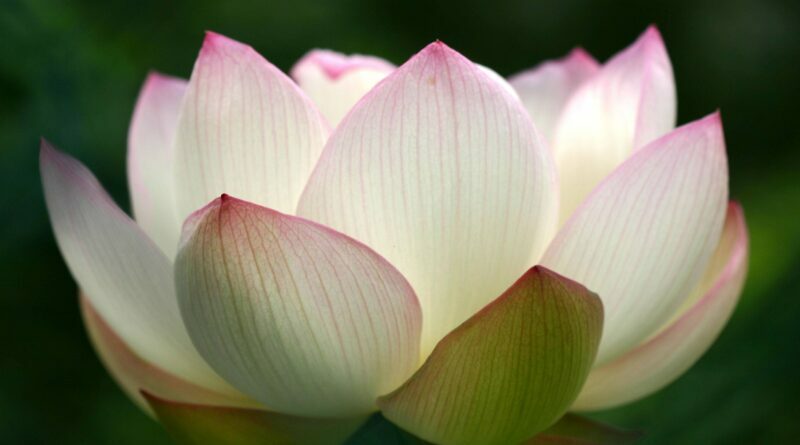
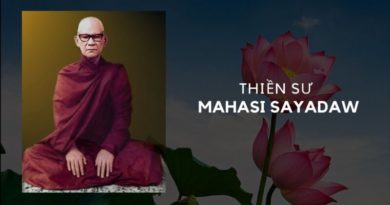
![Videos [khóa Thiền Vipassana 2017] 1. Cách Hành Thiền | Thiền Sư U Jatila 3 1 7](https://satima.net/wp-content/uploads/2020/07/1-7-390x205.png)
